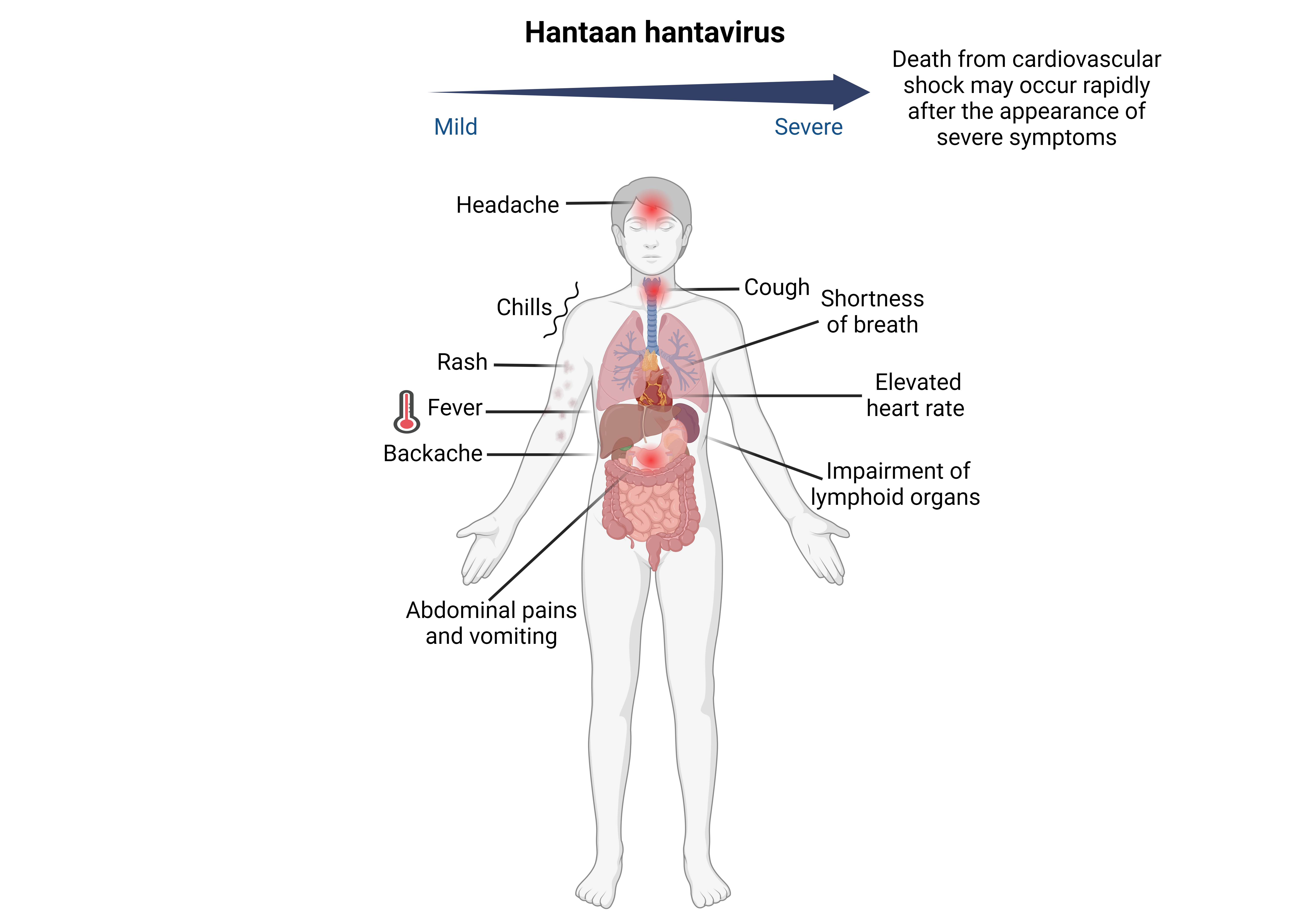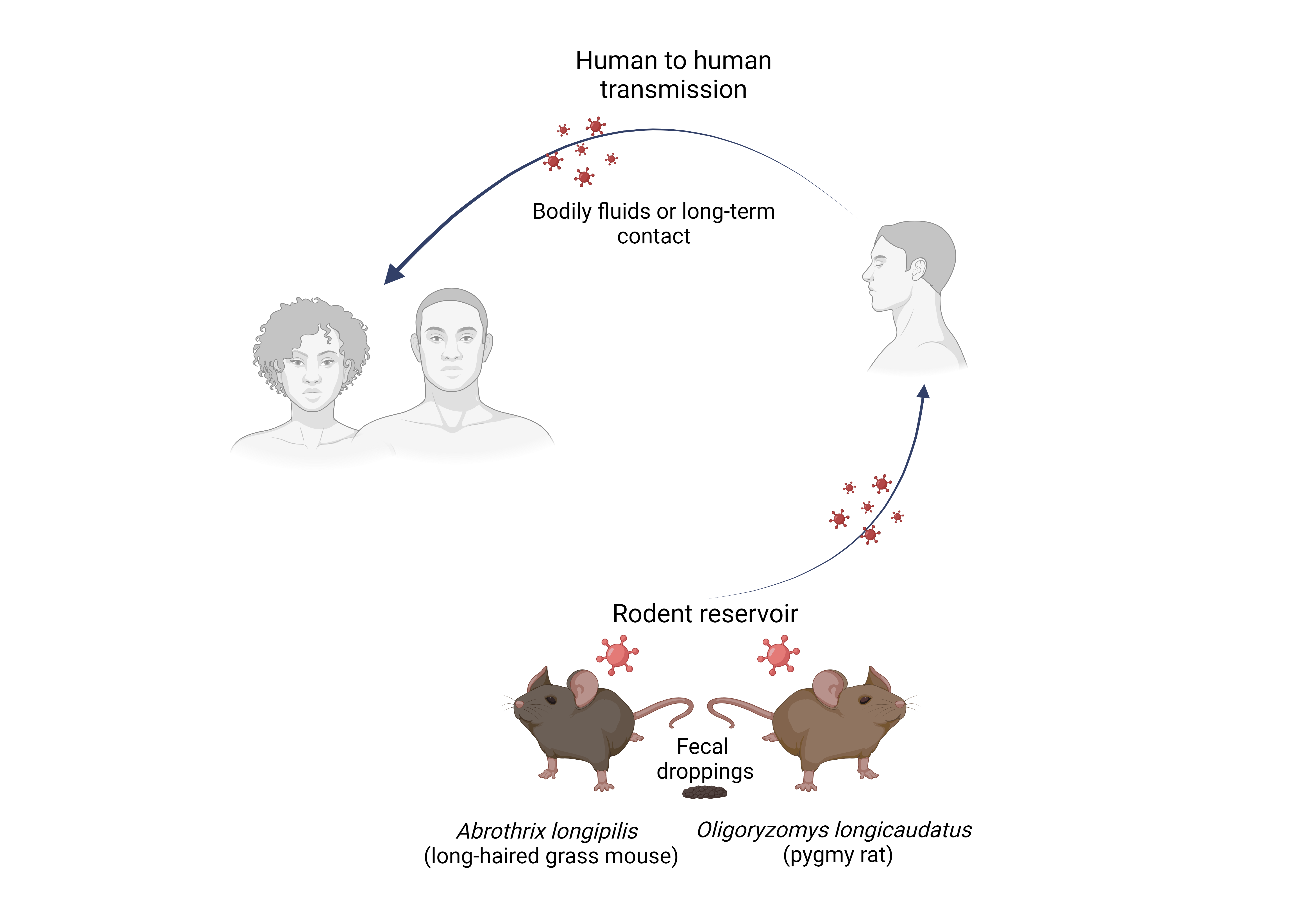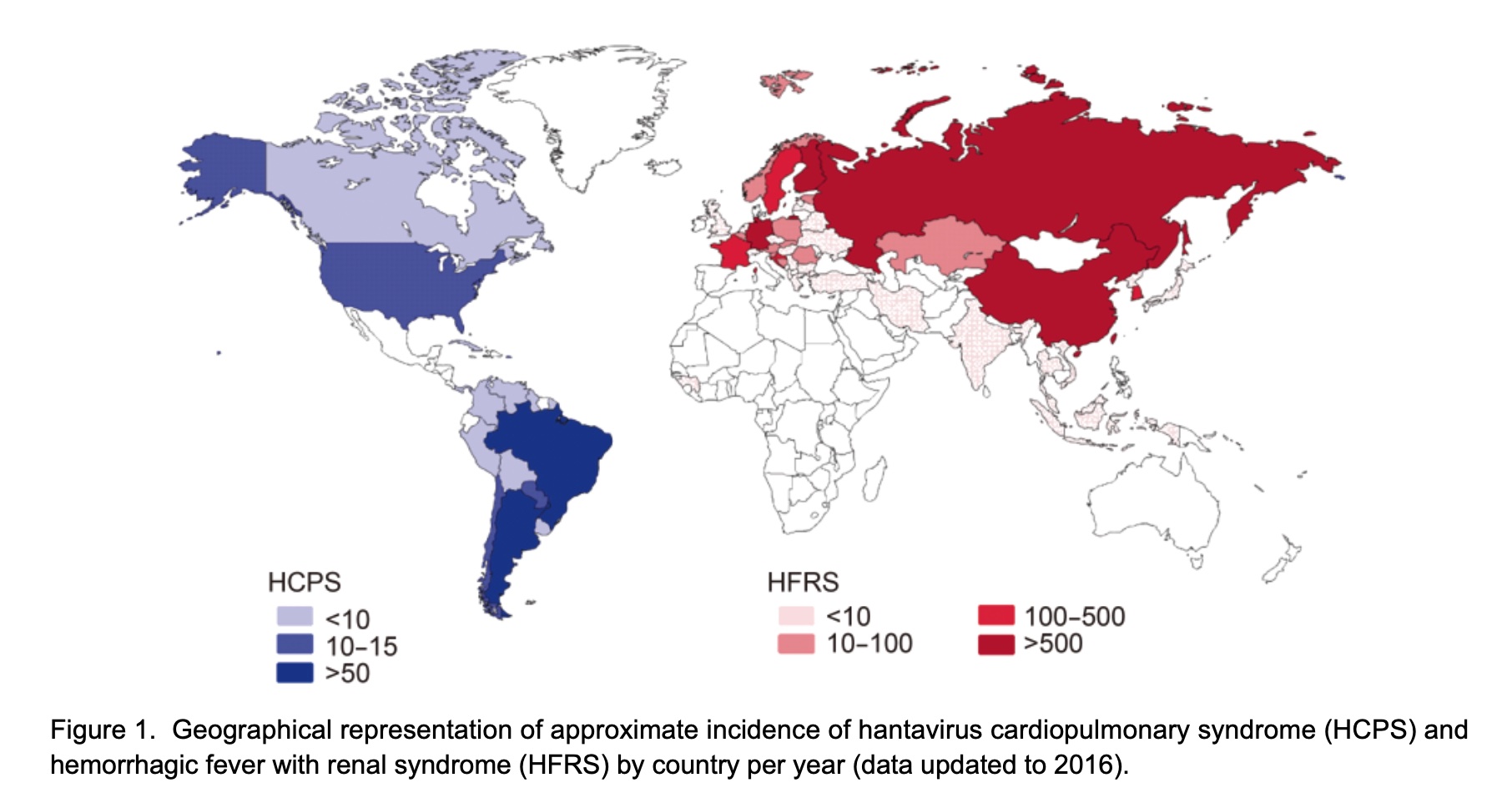Andes virus (ANDV)



Andes orthohantavirus was first identified when outbreaks of this new infection spread throughout Chile and Argentina. It is named for the Andes mountains of Chile and Argentina, where it was first discovered.
In 1995, it was finally characterized in Argentina on the basis of specimens from a patient who had died from HPS complications, a severe consequence of infection from Andes viruses.
As an emerging virus, it is more lethal than that of some of the other hantaviruses having a mortality rate between 40% and 50% in South America.
By far, it has been responsible for the most recorded cases of HPS in Argentina, Chile, and Uruguay combined and contributes to a large number of kidney failure cases.
The toolbox for this virus is currently in development. Please contact us via info@virusbankplatform.be for more information.
import { encodeTool } from '/_js/functions.js'
FA = FileAttachment
// Load the toolbox
families = await FA("/families.json").json()
_toolbox = await FileAttachment("/toolbox/toolbox.json").json()
toolbox = _toolbox.map( tool => encodeTool(tool) )
// console.log(toolbox)
addEncodedTools = (virus) => {
return ({ ... virus, tools: toolbox.flatMap( tool => virus[tool.encoded] ? tool.id : []) })
}
// Load all Newick tree file and create a dictionary `family -> tree`
nwks = await Promise.all(
families.map(async (family) => {
let tree = await FA("/"+ family + "/tree.newick").text()
return ({ family: family, nwk: tree })
}))
nwksAsMap = Object.fromEntries(nwks.map( el => [el.family, el.nwk] ))
// console.log(nwks)
// Load annotations for viruses for each family
_annotations = await Promise.all(
families.map( async (family) => {
let xls = await FA("/"+ family + "/family.xlsx").xlsx()
let _annotations = xls.sheet(0, { headers: true, range: ":L" })
let _trimmed = _annotations.map( virus => {
let trimmed = {}
Object.keys(virus).forEach( key => {
trimmed[key] = virus[key].trim()
})
return trimmed
})
return _trimmed.map( virus => ({... virus, family: family }) )
}))
// console.log(_annotations)
// Add tools information, just the list of tools ids
annotations = _annotations
.flat()
.map( virus => addEncodedTools(virus) ) import {encodeTool as encodeTool} from "/_js/functions.js"
familyAnnotations = annotations
.filter(virus => virus.family == virusFamily)
function virusInfo(_family, _virus) {
const info =
familyAnnotations.filter(row => row.abbreviation == _virus && row.family == _family)
return info[0]
}
// Handle grouped viruses by extending the model with isGroup: false/true
addGrouped = (virus) => {
const isGroup = (typeof virus.group_abbreviation !== "undefined") && (virus.group_abbreviation !== "")
const virus_pointer = (isGroup) ? virus.group_abbreviation : virus.abbreviation
return (
{ ... virus,
isGroup: isGroup,
virusPointer: virus_pointer,
resVirusId: (isGroup) ? virus.group_abbreviation : virus.abbreviation,
resAbbreviation: (isGroup) ? virus.group_abbreviation : virus.abbreviation,
resVirusName: (isGroup) ? virus.group_virus_name : virus.virus_name
}
)
}
// Create a list of all viruses of interest in the Excel file
// Add group information early on
annotatedViruses =
familyAnnotations
.filter(virus => virus.virus_of_interest == "Yes")
.map(virus => addGrouped(virus))
// Create a sublist of viruses with toolbox
// Take into account groups by selecting unique entries
toolboxAnnotatedViruses =
annotatedViruses
.filter(virus => virus.availability_in_toolbox == "Yes")
.filter((value, index, self) => {
return self.findIndex(v => v.resAbbreviation === value.resAbbreviation) === index;
})
// Derive a virus object from the ID
// The ID can be either a virus_id (from the ictv tree) or a group_abbreviation
virusIdToVirus = (virus_id) => {
// lookup the virus_id in the full list of viruses
const fullList =
annotatedViruses
.filter(v => v.virus_id.replace(/^'+|'+$/g, '') == virus_id || v.abbreviation == virus_id)
//.filter(v => v.virus_id == virus_id || v.abbreviation == virus_id)
// lookup the abbreviation for the group
const groupList =
toolboxAnnotatedViruses
.filter(v => v.group_abbreviation == virus_id)
if (fullList.length > 0) {
return fullList[0]
}
if (groupList.length > 0) {
return groupList[0]
}
}
// Return all matches for a virus ID
virusIdToViruses = (virus_id) => {
// lookup the virus_id in the full list of viruses
const single_virus =
annotatedViruses
.filter(v => v.virus_id.replace(/^'+|'+$/g, '') == virus_id || v.abbreviation == virus_id)
[0]
if (single_virus.isGroup) {
return annotatedViruses
.filter(v => v.group_abbreviation == single_virus.group_abbreviation)
} else {
return [ single_virus ]
}
}
function renderVirusToolbox(family, virus_id) {
// First extract the virus object from the ID or abbreviation
// This takes into account the groups
const virus = virusIdToVirus(virus_id)
if (typeof virus.tools !== "undefined" && virus.tools.length > 0) {
return html`
${toolbox.filter(tool => virus.tools.includes(tool.id) ).map(tool =>
html`
<h2 id="${tool.id}-section">${tool.name}</h2>
<div class="container grid">
<div class="g-col-12 g-col-md-3 toolbox one-tool" style="text-align:center;">
<div id="toolbox-contents" class="tool-container">
<a href="/toolbox/index.html#${tool.id}-section">
<div class="tool-wrapper">
<div id="${tool.id}" class="tool">
<div class="tool-tooltip-text">${tool.name}</div>
${tool.icon.map( i =>
html`<img class="tool-icon" height="${(tool.icon.length > 1) ? 150/tool.icon.length : 100}%" src="${i}"/>`
)}
</div>
</div>
</a>
</div>
</div>
<div class="g-col-12 g-col-md-9">
<p>${tool.description}</p>
</div>
<div class="g-col-1" style="text-align:center;">
</div>
</div>
<div class="col-xs-12" style="height:20px;"></div>
`
)}
`
}
else {
return html`
<p> </p>
`
}
}